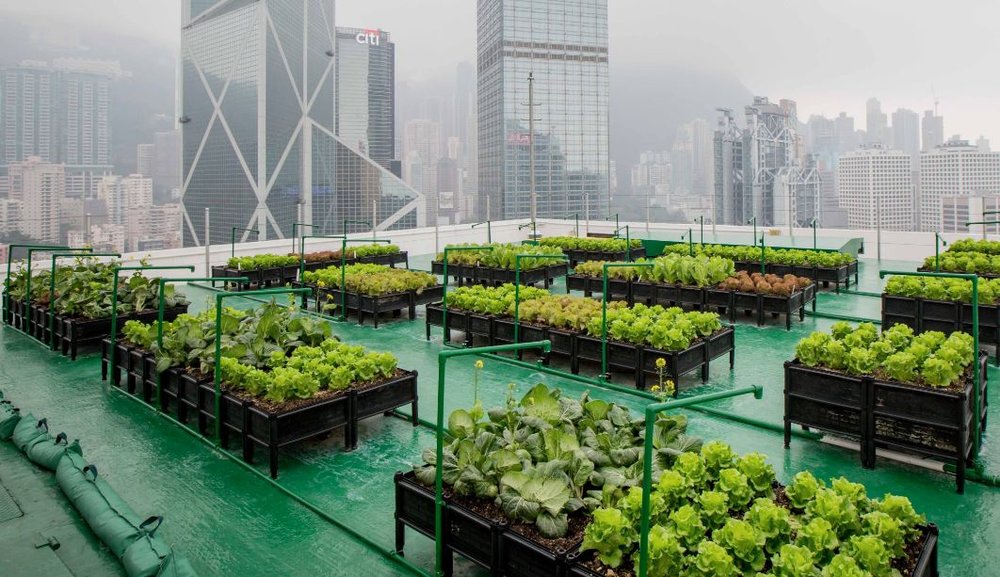Our City Blooming PDFs
Interested in expanding food offer for sale in the City of Chicago? Considering starting an area garden? Adjustments to the Chicago Zoning Ordinance permit farming uses like community yards and city ranches in many parts of the city. Below is a listing of frequently asked inquiries regarding the regulations and guidelines that farmers need to take into consideration when preparing an urban farming task.
The zoning change does not customize any type of other codes managing composting, building permits, buying or leasing City owned residential property, company licenses or ecological contamination. There are existing codes that manage these concerns and they remain completely result and might apply to your job. Area gardens are normally owned or taken care of by public entities, civic organizations or community-based companies and preserved by volunteers.
Urban farms expand food that is intended to be offered, either on a not-for-profit or for-profit basis. Due to their business objective, urban ranches need an organization certificate.
The Facts About City Blooming Uncovered
Composting is enabled however only for plant material that is generated and made use of on site. The quantity of compost material can not exceed 25 cubic yards at any given time according to the criteria in 7-28-715 of the City's Municipal Code. Yes. Due to the fact that the dirt at the majority of brand-new garden sites needs amending, compost, dirt, wood chips, or various other products can be obtained to construct or boost the expanding room - container and raised bed gardening etc..

If a structure permit is required after that the hoophouse will be considered an accessory building. You can figure out even more regarding the building permit demands by contacting the Department of Buildings. The 25,000-square-foot dimension limitation is intended to avoid a solitary neighborhood garden from controling a provided block or diminishing the block's existing household or business personality.
The limit does not put on yards found in Public Open Space (POS) districts. Can there be greater than one community garden that is 25,000 square feet on a single block? Yes. The dimension limitation relates to private yards, not to private blocks. No. Fencing is not called for, nevertheless, yards that have huge parking lot may be called for to mount fence or various other landscaping functions.
The smart Trick of City Blooming That Nobody is Talking About
B1 & B2 districts need that all commercial use tasks be carried out inside. R districts restrict business activity. The laws mirror the objective and intent of the Zoning Code. Is fencing required for metropolitan ranches? Yes. Fencings might be called for, together with landscaping and screening, for sure parking locations and exterior work or storage areas depending on area and the certain activity happening.
Yes. Urban farms call for building authorizations and zoning authorizations before building and construction. Other types of city evaluation may be called for depending on particular structures, activities, size, landscaping, licensing, public health and stormwater management issues. Most of these requirements are identified in the project layout or permitting procedure, nevertheless, the applicant may be accountable to independently determine certain licenses or This Site permits that might be needed.
The Division of Organization Affairs and Customer Defense can help determine the details kind of business license that's called for. Off street vehicle parking is required for a lot of commercial jobs in Chicago. The required number of car parking spaces is based on the number of employees functioning on site and not the square video of the growing space.
Examine This Report about City Blooming

Yes. An urban farm can sell compost material created on site, however, the operation must adhere to the regulations in 7-28-715 of the Chicago Municipal Code. Yes. Aquaponic systems are permitted indoors on urban farms in numerous zoning districts. A zoning evaluation and structure permit is called for in order to set up structures or systems and a service certificate is called for as defined over.
As much as five hives or nests of honey might be maintained as an accessory usage. Beekeepers have to sign up with the Illinois Division of Farming. For more details regarding the suggested zoning change you might contact the Department of Real Estate and Economic Advancement, Bureau of Planning and Zoning at 312.744.8563.
, which takes place in country areas at the edge of suburbs.
Little Known Questions About City Blooming.
It can entail a movement of natural farmers, "foodies" and "locavores", who seek to create socials media started on a shared values of nature and area holism. These networks can develop by means of official institutional assistance, becoming integrated right into local town planning as a "transition town" motion for lasting city development.
In either case, the a lot more direct accessibility to fresh veggie, fruit, and meat items that might be become aware with city farming can boost food safety and food security while reducing food miles, leading to lower greenhouse gas discharges, therefore contributing to climate modification mitigation. A few of the initial proof of urban agriculture originates from Mesopotamia.
Comments on “City Blooming Fundamentals Explained”